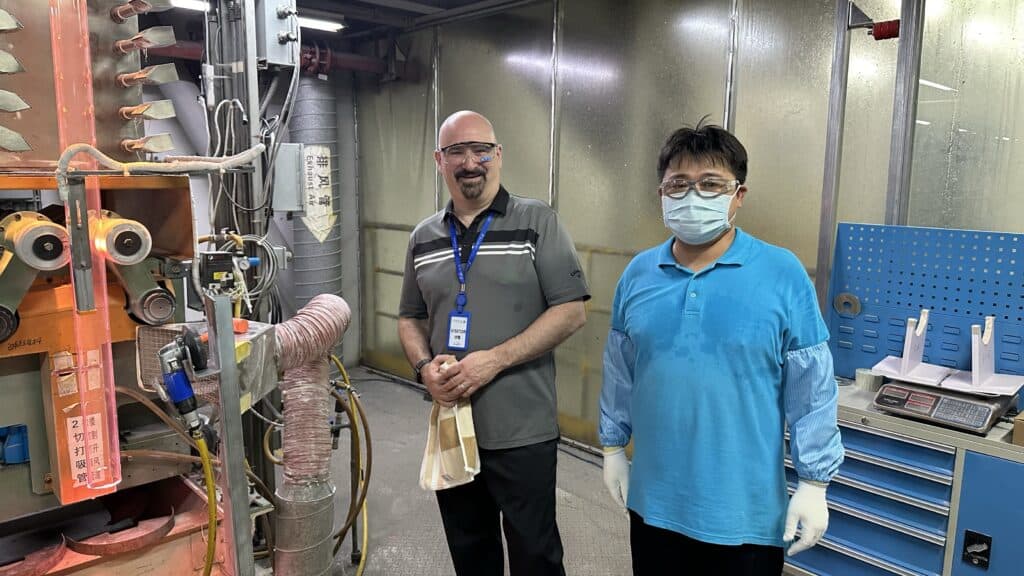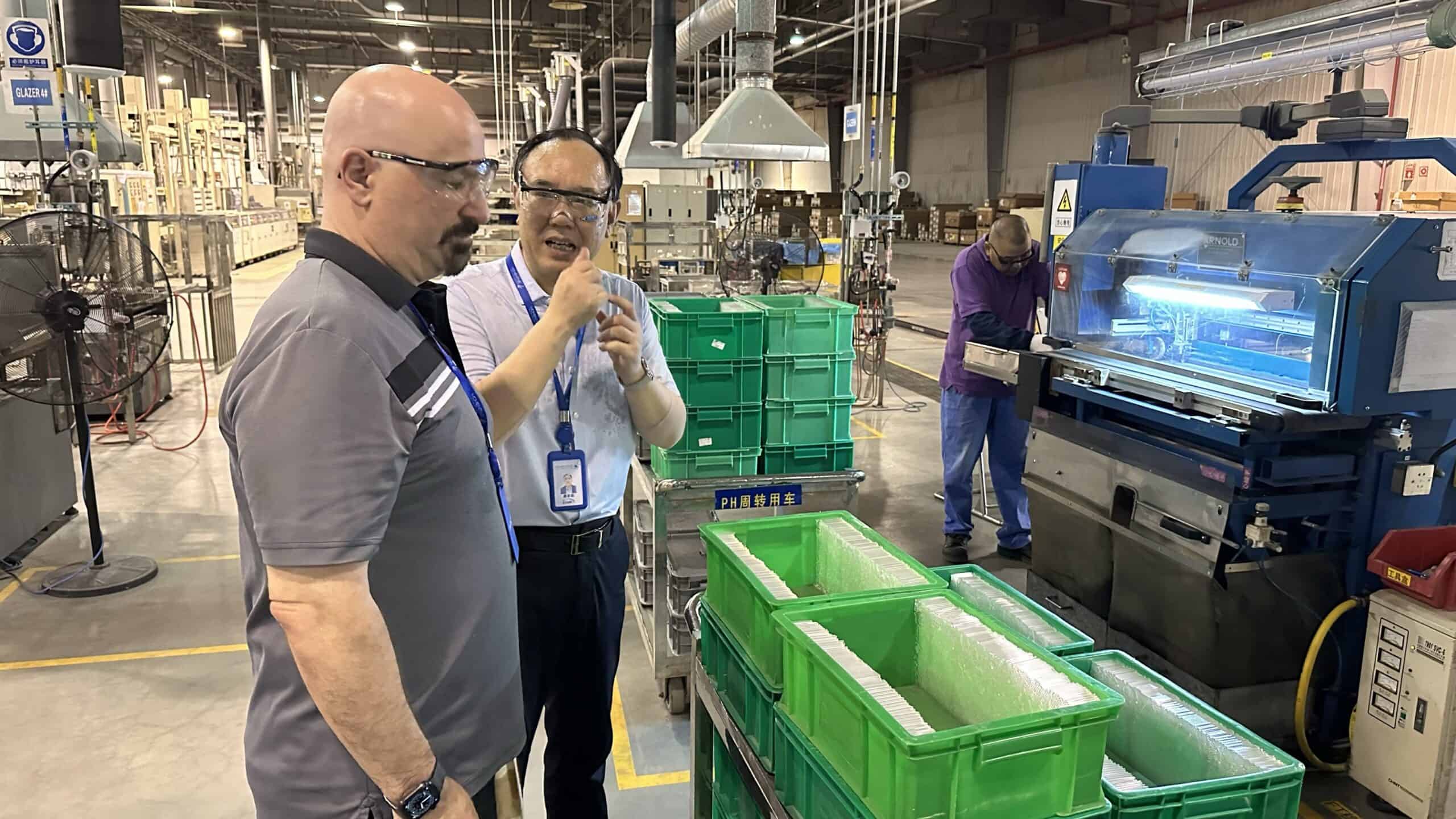Manufacturers never really WANT to use ceramics because they are so expensive. They only turn to one of the oldest human inventions when the high-performance plastic or metal just can’t take the heat anymore.
Things have moved on from the lightbulb era. Shinny up a wind turbine and you’ll find a silicone nitrate ball bearing in the generator, not a stainless steel one. The same goes for dental drills and other durable components facing extreme or corrosive conditions. The cost can be 30 times that of a steel bearing, but it will outlast whatever bit of kit it’s in.
Semiconductors are a stronghold. Technical ceramics can withstand intense plasma used at high temperatures, they can be conductive or be used as insulation. And in other end markets, formulations and processes are always being developed for anything from medical implants and EVs to antennas and protective armour. It’s a bespoke world of powders.

“We’re really in the age of materials,” Mark Wolf, CEO of Momentive Technologies, said in an interview with chemicalESG. “A lot of low hanging fruit has already been grabbed. Now there’s many technologies in many different industries where they are waiting for material advancements before they can go to the next step.”
Sizing the technical ceramics market is tricky as some large conglomerates still have units buried deep within the group. But it’s thought to be worth about $11 billion and seen as a bit of a niche segment dominated by Japanese firms like Kyocera, Ferrotec, Maruwa and Murata. Alongside are players like CoorsTek (its ceramic roots almost go back as far as the beer), CeramTec and Corning. Solutions are custom-made, formulated for a specific customer problem.
Momentive Technologies too has a long history in ceramics, running back through Union Carbide and GE. Now under the ownership of South Korean private equity firm SJL Partners and conglomerate Wonik, Wolf just broadened the portfolio with the acquisition of a unit from Sibelco making fillers for resin substrates that channel heat and allow chips to run more efficiently. And there could be further acquisitions on the horizon.
“It really is underserved,” according to the CEO. “There aren’t lots of people pouring money in or doing acquisitions or doing roll-up strategies. If there are companies out there producing materials that are synergistic with what we do, or have factories that are synergistic where we can add value, we’re going to be very interested.”
The former Kyocera executive plans to expand capacity at the newly acquired South Korean facility. The pace of change in semiconductors is such that ceramic makers have to be present geographically in all market as “everyone wants fast.”
Elsewhere, Momentive has also developed a line of high-purity quartz vials for injectables that can handle UV radiation when sanitised. Although the EV market is a little slow right now, it remains an interesting as carmakers drive down energy usage, he added.
”I would prefer to be more diversified. 85% of the business is in semiconductors. That’s a lot of eggs in one basket,” Wolf said in the interview. “However, inside the semiconductor basket we are diverse.”
Because the market isn’t that big, increasingly ceramic players are considering opportunities to crossover into adjacent advanced materials that have similar characteristics or somehow tied to ceramics. Materials that go into semiconductor chambers is one area. There’s also scope to expand downstream into valued-added processes like brazing, metallisation and coatings.
For now, the market has been relatively insulated from low-cost competitors in China, who tend to focus on lower-purity formulations for photovoltaics.
“It’s a good time to be in materials,” Wolf added.


